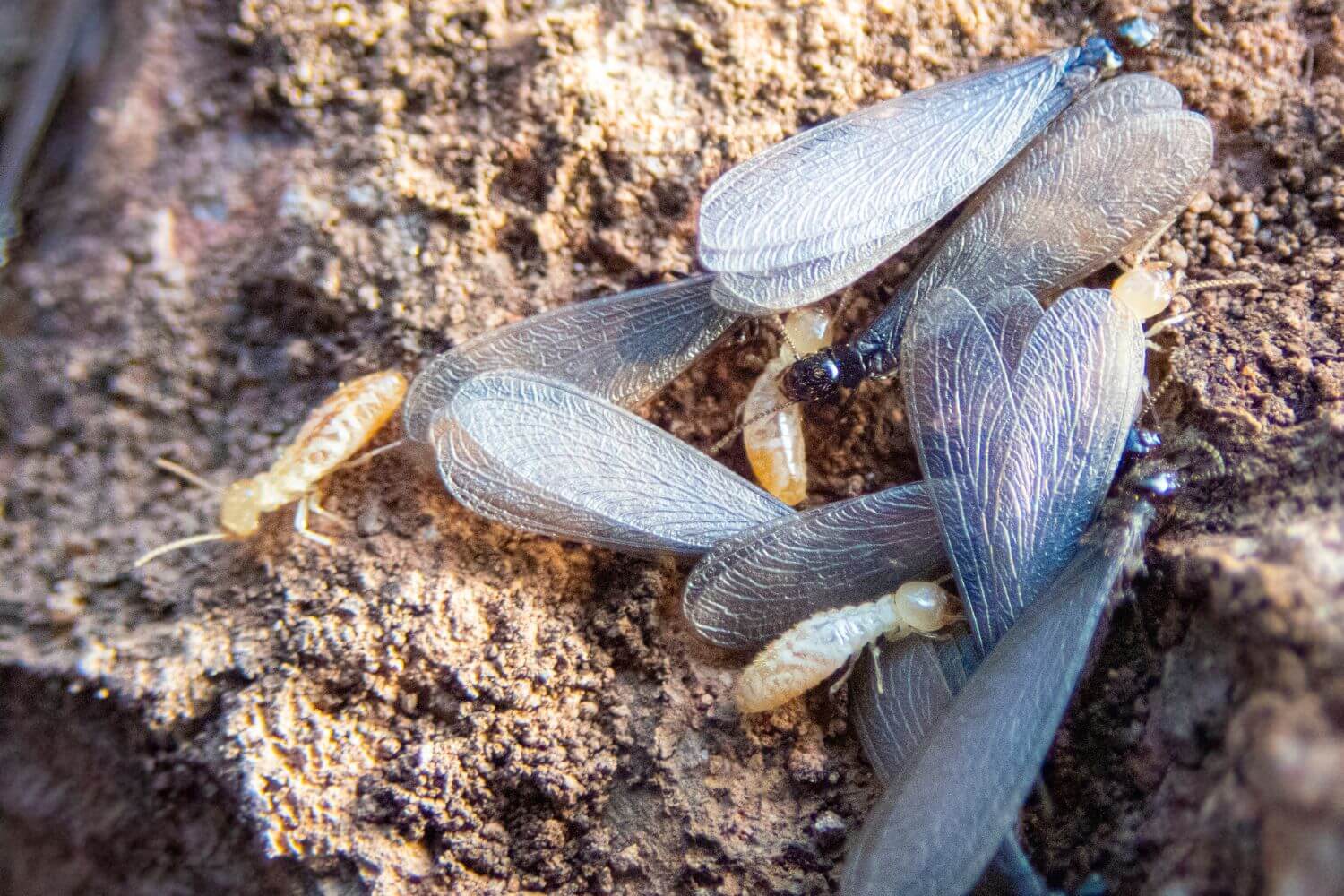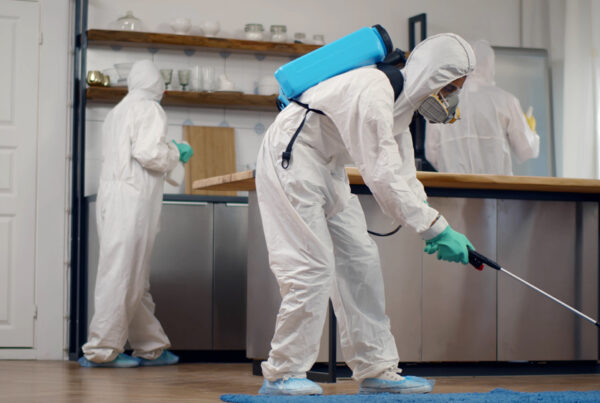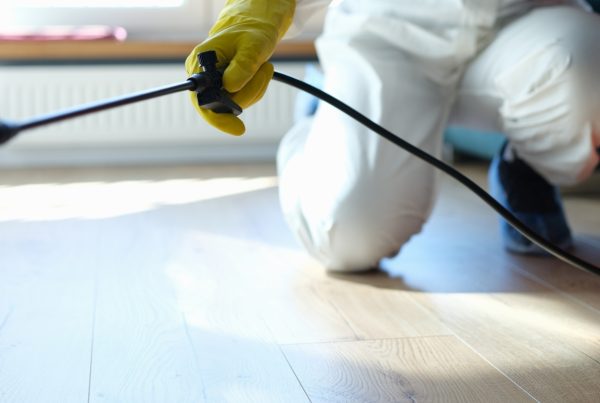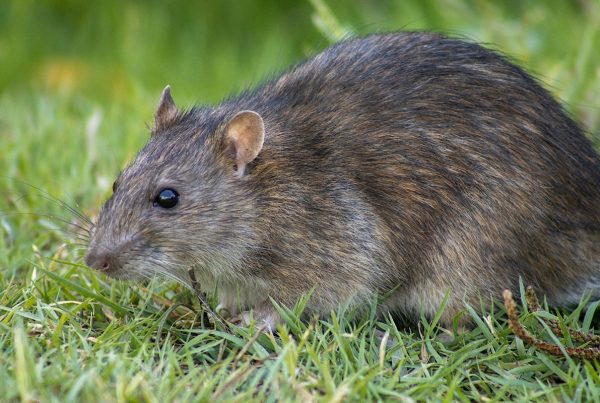With warmer weather just around the corner, wood-destroying insects will start showing up in greater numbers. We’re talking, of course, about termites, carpenter ants, and carpenter bees. Below we’ll provide you with some basic information about these pests, including warning signs of an infestation.
TERMITES
When looking at a termite probability map, you can see that structures in over half the U.S. are at moderate-to-very-heavy risk of an infestation. These insects cause massive amounts of damage nationwide each year because of their wood-destroying behavior.
Why Do Termites Eat Wood?
Termites rely on cellulose for nutrients. Wood is an easy source of cellulose for these bugs, as it can be found in forests and cities alike. Along with wood, termites can also get cellulose from eating things like cardboard, paper materials, wallpaper, drywall, and plant-based textiles.
What Does a Termite Look Like?
Termites in the U.S. range from creamy to dark brown in color. Their size can vary a lot from species to species, measuring from 1/8 of an inch to 1/2 an inch.
Termites are frequently mistaken for “white ants” due to their size, 6 legs, and antennae. However, termites’ bodies are more oval-shaped than ants and less distinctly segmented into 3 separate parts (head, thorax, and abdomen). Whereas you can see each distinct segment of an ant’s body, at first glance it might look like a termite only has a head and a single body segment.
How Do You Know if You Have Termites
It’s possible to have a termite infestation without seeing the termites themselves. However, there are a few key things to look for to help you spot a termite problem.
Signs of a Termite Infestation:
- You may notice signs that are similar to water damage, like bubbling paint or windows and doors that stick when you try to move them.
- If you knock on wood and it sounds hollow when it shouldn’t, this can also be a sign of a termite problem.
- Subterranean termites unknowingly give themselves away with their mud tubes: tunnels they make out of saliva, dirt, and feces that they use to travel between their nest and food sources.
If you see these lines of dirt around your home’s foundation or other signs of termites, don’t wait to contact an exterminator.
CARPENTER ANTS
Carpenter ants are a lot like other common ants that typically raid homes. They like to eat grease, meat, carbs, and sugary substances, and they live in large colonies with a queen. The main difference is that carpenter ants will build their nests by tunneling into the wood.
Do Carpenter Ants Eat Wood?
No, carpenter ants don’t eat wood, but they do use wood for their nests. Carpenter ants most often target wood that has rotted or undergone some water damage, mainly because it’s softer and easier to chew. From there, they may tunnel to firmer, undamaged wood. They then push the leftover debris and wood shavings out of their tunnels, which is often referred to as frass.
What Do Carpenter Ants Look Like?
Carpenter ants are much bigger than typical house ants, measuring between 1/2 an inch to 5/8 an inch long. They’re usually black, red, brown, or a combination of red and black in color.
How to Tell if You Have Carpenter Ants
Unlike termites, which tend to remain hidden, you might actually see carpenter ants foraging for food around your property, along with other possible signs.
Signs of a Carpenter Ant Infestation
- You might see tiny holes with little piles of sawdust-like material below
- You might hear faint noises, similar to rustling, behind walls
- You might notice galleries, or tunnels, within the wood of your home
- You might also see winged carpenter ants (or swarmers) flying around during spring as they look for new places to start colonies.
- You might find discarded wings from the swarmers
Do Carpenter Ants Cause Damage?
Yes! If carpenter ants infest a home, they can potentially chew tunnels into its timber frame or support beams. While termites can cause a lot more damage in much less time, a carpenter ant problem can get out of hand and potentially cause structural damage if ignored.
CARPENTER BEES
While you might mistake one for a loner bumblebee, carpenter bees are a unique, wood-destroying bee. Carpenter bees build individual nests, rather than living in a colony.
Do Carpenter Bees Eat Wood?
Similar to carpenter ants, carpenter bees do not eat wood. However, they can damage wood as they build their nests, drilling little, round holes to make tunnels. While some will bore these holes into trees, others will make them in fence posts, porch beams, eaves, or building frames.
What Does a Carpenter Bee Look Like?
Carpenter bees measure 1/4 to 1 inch long. The front part of their body (the thorax) is fuzzy and black and yellow in color. The rear part of the body (the abdomen) is shiny, black, and hairless—unlike bumblebees, which have yellow and black abdomens covered in fuzz.
How to Tell if You Have Carpenter Bees
Holes in wood are the most typical signs of carpenter bees. The holes are a little less than 1/2 an inch wide, round, and about 1 inch deep. They’ll look smooth, almost as if someone drilled into the wood. However, visible holes in your home’s wood aren’t the only indications of carpenter bees.
Signs of a Carpenter Bee Infestation
- You hear buzzing sounds
- You physically see the carpenter bee swarming around your porch, wooden railings, or fence
- You find sawdust piles
- You notice yellowish stains on wood, often caused by carpenter bee droppings
Do Carpenter Bees Cause Damage?
Yes, however, carpenter bee damage tends to be more cosmetic than structural. However, if a lot of carpenter bees have been drilling holes close together, significant damage can form over time. The good news, at the very least, is that these bees are fairly non-aggressive and only attack if heavily provoked.
If you need help with wood-destroying pests, count on the Boston pest control experts at Pestex Inc. Since 2004, our family-owned business has been a proud member of the BBB, and we are committed to providing outstanding pest control services. Call (617) 332-3344 today!






